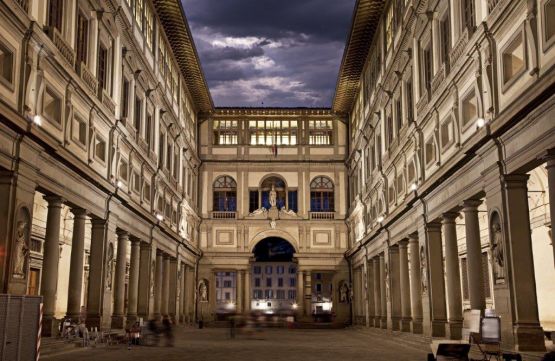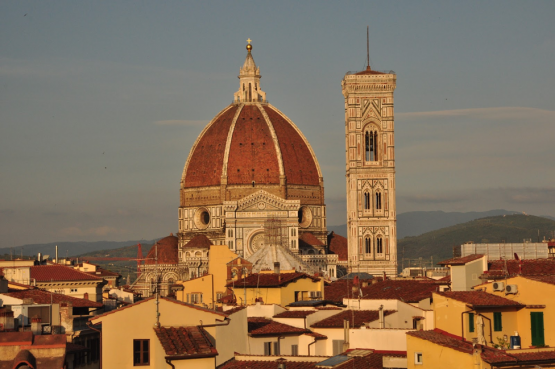Located between Palazzo Vecchio and the Arno river, about 15 minutes away from the Duomo, the Uffizi Gallery was built by Giorgio Vasari as administrative offices. It became a museum in 1769, making Florence the second European city to boast a public museum after Vienna. Today the Uffizi’s collection is considered one of the major graphic collections of the world. Its prints and drawings date from the end of the 14thcentury to modern day with many by Renaissance masters including the celebrated Leonardo Da Vinci.
Born out of wedlock to a peasant girl and a wealthy notary, Da Vinci was raised by his father and apprenticed at 14 years of age to the artist Verrocchio. It was not long before Da Vinci’s talent was recognized and of course we know it was he who created the famous Last Supper and Mona Lisa. Da Vinci, like many of his peers, did not practice art and eschew science; he saw the two as complementary and was a true Renaissance man in his passion for learning about all subjects.
Da Vinci’s legacy includes a staggering 13,000 pages of notes and drawings that included mechanical designs, botanical sketches, architectural drawings, and anatomical studies. Da Vinci contributed greatly to knowledge of the human body. He was the first to comprehend the complexity of the vascular system and his detailed drawings advanced the development of both the natural and physical sciences.
At the Uffizi Gallery, visitors are able to see some of Da Vinci’s sketches every day except Mondays. Those in the studio room are available to see only on request.
This vast museum’s remarkable collection is so vast and so huge that it could take a week to muddle your way through unassisted. This is one of those times in life when having the help of an expert guide is truly an asset. Think of trying to climb Mount Everest or cross the Sahara Desert without assistance; trying to navigate your way through the Uffizi and enjoy the nuances of Da Vinci’s sketches would be overwhelming without help and you likely wouldn’t get very far in a short period of time.
A good guide will take visitors on thematic routes through the gallery, interpreting relevant works with accurate historical information and fascinating detail. The most popular such tour follows the development of Italian paintings from 1200 until 1500, which of course encompasses the life and times of Da Vinci.
When the Library of Congress showed just one of Da Vinci’s sketches – his study for the Adoration of the Magi – they put it best when they titled the exhibit, Share the Perspective of Genius. How else do you get into the mind and process of someone as gifted as Da Vinci all these years later than to view his preparatory sketches?
Seeing how he worked, how he planned and formulated his masterpieces, has to be the next-best thing to watching genius unfold first-hand. Having a good guide illuminate the secrets of Da Vinci’s sketches is the key; it is truly the difference between merely seeing his sketches and understanding them.
What will you discover on a tour of the Uffizi Gallery on one of our tours?













Comments